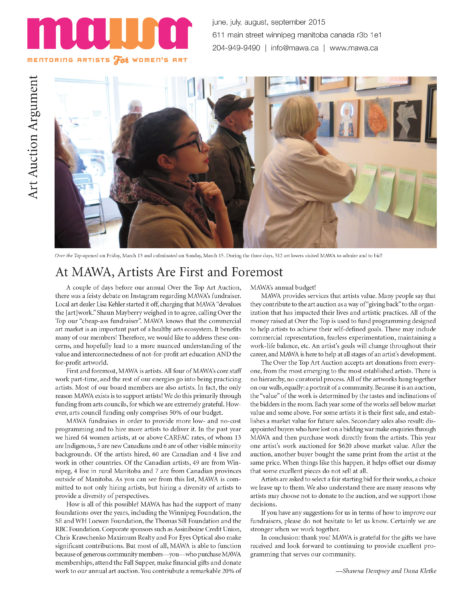
Bad Utopia: NGTVSPC 2011-2013
by NGTVSPC Collective, 2015
2011
Dear xxxx,
Hi buddy, xxxxx and I broke up. I am maybe someone’s mistress? I joined a coven of witches (just kidding, I joined a “curatorial collective” at a gallery called negative space and we all wear black).
2012
Dear xxxx,
I think in this space/opportunity, I have to flex weirdness. I have a platform for weirdness and am supported for weirdness, but I feel like I’m just wasting it sometimes.
2015
We recently discussed the collective process via skype and agreed that some people seem to conflate the word collective with the concept of egalitarianism. I wonder if that misunderstanding is due to the belief that collectives organize with conversations, not commands. In our case, there were many conversations that illuminated—and continue to illuminate—that speaking is difficult and communication is even harder. We were sort of without a unanimous agreement on a singular vision, and it follows that there is no succinct summary or reliable narrator. I mean, ludicrously, that when we talk about it we sound very negative. But it was a rigorous exercise to navigate between the desire to self-express and the consequential terror and anxiety from doing so.
NGTVSPC formed out of necessity in the summer of 2011, as a collectively run venue, studio space and gallery at 253 Princess Street, Winnipeg (formerly Buffalo Farm Equipment). Between 2011-2013 Negative Space curated, hosted and made exhibitions and events such as Sidings 1: When I Hear The Word Culture I Call The Police, Not Enough Fest, Dah Dit Dah, Dioramarama, and various solo and group exhibitions. The space was funded by studio rentals, music shows and volunteer labour.
How can we think about Negative Space now that it no longer exists?
As a feminist collective in the history of feminist collectives that can relate to “The Tyranny of Structurelessness” (1972) by Jo Freeman aka Joreen.
As a DIY punk space in the history of DIY punk spaces in Winnipeg, Canada, and internationally.
As some young, white people renting a space in the Exchange District.
My great-grandfather and my grandfather and my uncle and my dad all worked for the Canadian Pacific Railway. My dad remembers going to Chinatown on Saturdays as a kid in the 1950s. My grandpa would borrow a projector from work and show films at a church on Pacific Avenue, which you can see from the parking lot of NGTVSPC. I wonder if it was his idea or if he was on official CPR business to atone for the great violence done to the 17, 000 Chinese workers who built the railway—the railway that was needed in 1885 to bring soldiers across the prairies to end the Northwest Rebellion. My uncle would later become a farmer and visit 253 Princess Street when it was Buffalo Farm Equipment. When I told him that we were making an art space there he said, “Ah-huh, I think that’s called gentrification.”
As an artist-run centre in Winnipeg.
As another building that was not universally physically accessible.
As a group of artists who endeavoured to make conceptual art together? LOL!
As a group of feminists, women, and queer and gender non-binary people who wanted to signal that we were a place where other people like us would want to hang out … but without wanting to claim to be a safe space or a safer space.
As a place that attempted to put into action alternative modes of economics and production as forms of anti-capitalism.
Meetings, cleaning, painting, fixing, installing, bartending, taking down, Rachel Whiteread’s cast absences, emailing, gallery sitting, gossip, exhaustion, waiting until people leave, cleaning, listening, conflict, picking up cigarette butts, texting, running cable, watching, pride, checking sound, recording, emotions, complaining, cleaning, organizing, scheduling, dance parties, paying out of pocket, going into debt, tears, outfits, work/avoidance, ideas, biting one’s tongue, hysterical laughter, wondering why it seemed like a good idea.
The space came to dominate the idea. Each member of NGTVSPC will have a different reason why the group came together, a different rationale for its existence, for their involvement and what our common goals were. Some of this is true; some of this is wishful thinking or creative remembering. There are many failures of NGTVSPC and many projects that will remain scratched on bar napkins never to be realized. The space operated with no funding, run by people who all held day jobs, scrambling to pay their own rent and/or debt. Labour and time and paying the bills won out over curating, skill sharing, workshops, study groups and all the thousands of other things we planned.
Collectivity is messy: a ridiculous, generative task. The idea for the name came from talking about photo negatives found after the loss of one of our grandmothers. And, over the two years the space was open, it functioned much like the photographic process: an attempt to retrieve something, pulling information out of a hazy contour in the dark. We are all burdened or uplifted by our respective traumas, egos, privileges and competitiveness. In capitalism, we come to the collective with the cartoon image of the commune, the supposed naïveté of the communard. Women join covens. Queers have clutches. NGTVSPC was in some ways a clutchy, cliquey coven, which was why we showed up every day to do it. Our reluctance to define its history speaks to the care we have learned to take when we’re asked anything as a collective.
POSITIVITY: Thank you to the volunteers. Thank you to the collective in all its incarnations.
SOMETHING TO DO WITH how parsing out the valuable, communicable, not-fucked-up ideas about art is painful.
SOMETHING ABOUT THE DESIRE TO DO SOMETHING AND THE THING ITSELF.

